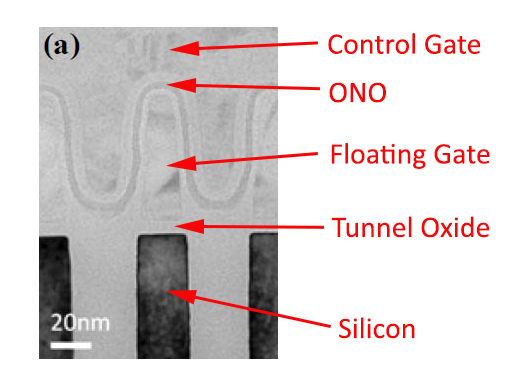The Truth About SSD Data Retention
by Kristian Vättö on May 13, 2015 3:42 PM EST
In the past week, quite a few media outlets have posted articles claiming that SSDs will lose data in a matter of days if left unpowered. While there is some (read: very, very little) truth to that, it has created a lot of chatter and confusion in forums and even I have received a few questions about the validity of the claims, so rather than responding to individual emails/tweets from people who want to know more, I thought I would explain the matter in depth to everyone at once.
First of all, the presentation everyone is talking about can be found here. Unlike some sites reported, it's not a presentation from Seagate -- it's an official JEDEC presentation from Alvin Cox, the Chairman of JC-64.8 subcommittee (i.e. SSD committee) at the time, meaning that it's supposed to act as an objective source of information for all SSD vendors. It is, however, correct that Mr. Cox works as a Senior Staff Engineer at Seagate, but that is irrelevant because the whole purpose of JEDEC is to bring manufacturers together to develop open standards. The committee members and chairmen are all working for some company and currently the JC-64.8 subcommittee is lead by Frank Chu from HGST.
Before we go into the actual data retention topic, let's outline the situation by focusing on the conditions that must be met when the manufacturer is determining the endurance rating for an SSD. First off, the drive must maintain its capacity, meaning that it cannot retire so many blocks that the user capacity would decrease. Secondly, the drive must meet the required UBER (number of data errors per number of bits read) spec as well as be within the functional failure requirement. Finally, the drive must retain data without power for a set amount of time to meet the JEDEC spec. Note that all these must be conditions must be met when the maximum number of data has been written i.e. if a drive is rated at 100TB, it must meet these specs after 100TB of writes.
The table above summarizes the requirements for both client and enterprise SSDs. As we can see, the data retention requirement for a client SSD is one-year at 30°C, which is above typical room temperature. The retention does depend on the temperature, so let's take a closer look of how the retention scales with temperature.
EDIT: Note that the data in the table above is based on material sent by Intel, not Seagate.
At 40°C active and 30°C power off temperature, a client SSD is set to retain data for 52 weeks i.e. one year. As the table shows, the data retention is proportional to active temperature and inversely proportional to power off temperature, meaning that a higher power off temperature will result in decreased retention. In a worst case scenario where the active temperature is only 25-30°C and power off is 55°C, the data retention can be as short as one week, which is what many sites have touted with their "data loss in matter of days" claims. Yes, it can technically happen, but not in typical client environment.
In reality power off temperature of 55°C is not realistic at all for a client user because the drive will most likely be stored somewhere in the house (closet, basement, garage etc.) in room temperature, which tends to be below 30°C. Active temperature, on the other hand, is usually at least 40°C because the drive and other components in the system generate heat that puts the temperature over room temperature.
As always, there is a technical explanation to the data retention scaling. The conductivity of a semiconductor scales with temperature, which is bad news for NAND because when it's unpowered the electrons are not supposed to move as that would change the charge of the cell. In other words, as the temperature increases, the electrons escape the floating gate faster that ultimately changes the voltage state of the cell and renders data unreadable (i.e. the drive no longer retains data).
For active use the temperature has the opposite effect. Because higher temperature makes the silicon more conductive, the flow of current is higher during program/erase operation and causes less stress on the tunnel oxide, improving the endurance of the cell because endurance is practically limited by tunnel oxide's ability to hold the electrons inside the floating gate.
All in all, there is absolutely zero reason to worry about SSD data retention in typical client environment. Remember that the figures presented here are for a drive that has already passed its endurance rating, so for new drives the data retention is considerably higher, typically over ten years for MLC NAND based SSDs. If you buy a drive today and stash it away, the drive itself will become totally obsolete quicker than it will lose its data. Besides, given the cost of SSDs, it's not cost efficient to use them for cold storage anyway, so if you're looking to archive data I would recommend going with hard drives for cost reasons alone.














86 Comments
View All Comments
melgross - Wednesday, May 13, 2015 - link
I hate to say this, but yes! I've found that companies can do the darnedest things, to paraphrase Art Linkletter. So I've worked with music companies trying to restore old master tapes from warehouses without heating, air conditioning, or leak free roofs.I've been called in by companies whose backup tape facilities, where they stores older, but valuable data, were flooded because they built them in a depressed area where runoff collected.
I could give you stories that would chill you to the bones.
TheRealPD - Thursday, May 14, 2015 - link
i was commenting on customs warehouses - where one would both imagine that 'if' there was any risk of flooding then it would have been discovered years ago & are being manned (effectively) 24/7 by staff processing packages so the temps & humidity & whatnot need to be reasonable (both for the workers & so they're not inundated with compensation claims for damaged goods)... ...& planes/boats/whatever, since the OP was talking about shipping a SSD with data on internationally.Now obviously there can still be calamities, but if, say, the customs warehouse burnt down or was hit by a tidal wave or whatever, or a ship sank or was captured by pirates or ... ...destroying or claiming as booty all of the contents or cargo, this isn't a limitation of SSDs & their ability to retain data in transit, but instead an unpredictable event that couldn't be planned for.
mkozakewich - Wednesday, May 13, 2015 - link
Anyone who's seriously asking those questions don't know what they're talking about, so I wouldn't worry. A drive with only a few TB written to it would last a year with no problem at highish temperatures.Kevin G - Wednesday, May 13, 2015 - link
For the curious, Tech Report did a data retention test as part of their SSD endurance experiment. The test was performed at 300 TB, well beyond their endurance ratings.http://techreport.com/review/25681/the-ssd-enduran...
Spoiler: no data loss after a week.
SunLord - Wednesday, May 13, 2015 - link
Facts don't matter only drama and click bait articlessheh - Wednesday, May 13, 2015 - link
But they didn't test long term retention.Kevin G - Wednesday, May 13, 2015 - link
True but they had written enough data to have run into any potential loss due to 300 TB being written at the time.mkozakewich - Wednesday, May 13, 2015 - link
Well, duh. The 100TB limit is only to be safe, and then the 1 week rating (if the drive had been run at low temperatures for that 300 TB) is only the lowest possible period of retention to hold to the standard.It's like people proclaiming that your milk will go back after one week in the fridge. Like, sure, it can. It could last two weeks after that, too. The due date catches 99.95% of all cases, but that's all it's designed for.
sheh - Wednesday, May 13, 2015 - link
"for new drives the data retention is considerably higher, typically over ten years for MLC NAND based SSDs."Where's this 10 year figure from? I recall reading something similar in a Dell document from 2010 or so, but basic flash reliability is supposed to be worse nowadays with the smaller manufacturing processes.
melgross - Wednesday, May 13, 2015 - link
Accelerated aging testing. It's a well understood methodology.